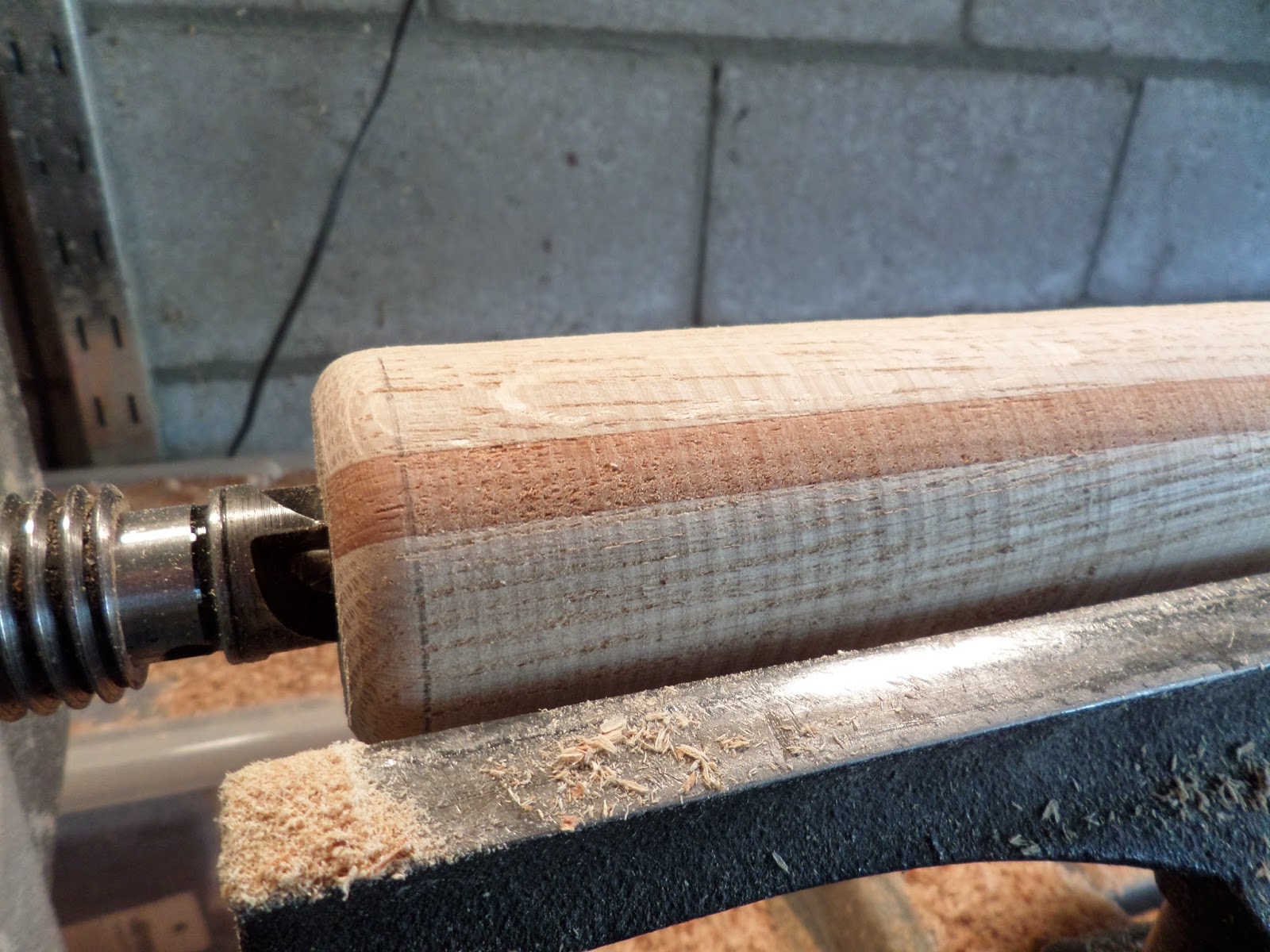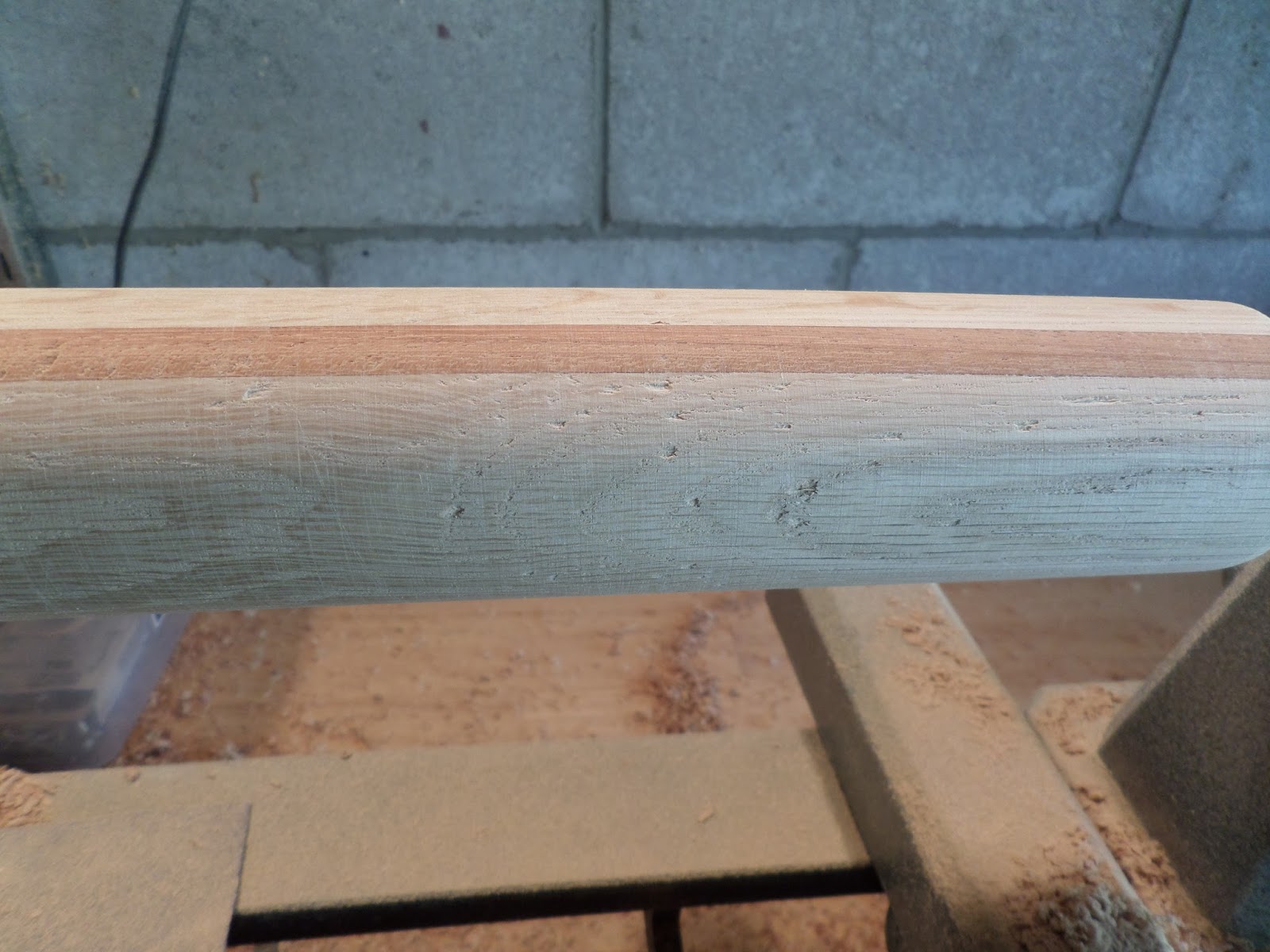Well, we have some stormy weather ahead later today so I thought I'd go down to the wood shop and do a little turning and I decided to try to make a coffee scoop yet again. But first the background on this:
I have long been a big fan of turner Stephen Hogbin, the Canadian artist. He has been professionally active since the 1960's and was one of the turners in the 1960s & 1970s who took wood turning from an industrial craft to an art form. His work is really quite incredible.
Anyway, a copy of his latest book Hogbin on Woodturning came in the mail yesterday and I spent last night and most of the early hours of this morning reading and studying it.
Hogbin is well known for constructing laminated blocks, turning them resulting block to shape and then disassembling it into pieces and re-building the pieces into an entirely different shape. One of his simpler projects are his well known salad servers. These are a pair of spoons that are created out of either a solid spindle block or a laminated block, turned, and then the whole thing is split into two pieces. The bowl is hand carved and with that you have two identical spoons. Here is a link to a photograph: Stephen Hogbin spoons.
I think the servers he makes are pretty cool and so I decided to try the ill-fated, never accomplished coffee scoop project from several years ago and no wanting to be wasteful, I decided to use the rolling pin that began to de-laminate several days ago and make a scoop out of it.
Here's what happened:
Ok, here's the rolling pin that I made and that I used for this project:
I took the pin and cut it in half and mounted it on the lathe:
And turned it down to a spoon shape:
And then I cut it in half length wise on the bandsaw. So far so good:
I drilled a shallow starter hole in the center and began to hand carve the bowl of the spoon. My enthusiasm was beginning to grow. I might actually get a coffee scoop this time!
As the wind outside was beginning to pick up and it was getting rather cold, I decided to speed things up a bit and go and get the Dremel tool with a round Kutzall tip and hurry the hollowing part of the project up:
Once I got it sufficiently hollowed out I picked up my gouge and began to finish carving the bowl. It was almost finished when -CRACK!-the red Brazilian cherry layer suddenly broke:
So I chipped off the rest of the red layer off and began carving out the remainder of the bowl by hand. Then the rim broke and that was the end of this project:
Comment:
Well, white oak is a little too coarse for this type of carving and I'm avoiding laminated blanks for this. I'm going to try it again later today with some red birch which is softer and has a finer, closed grain that should hold up better.
More later
VW

















































